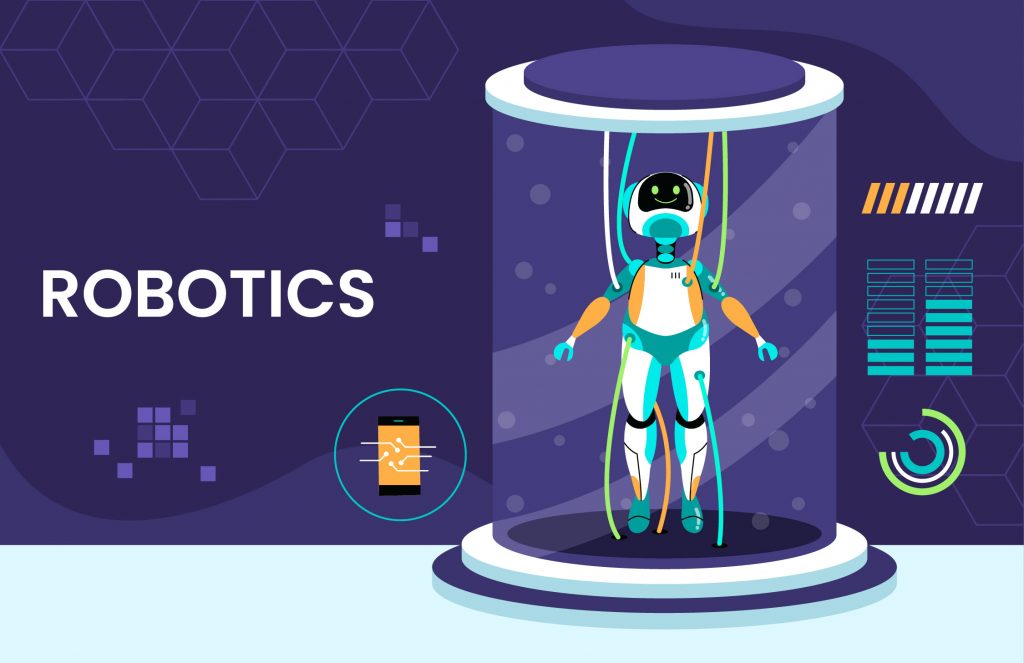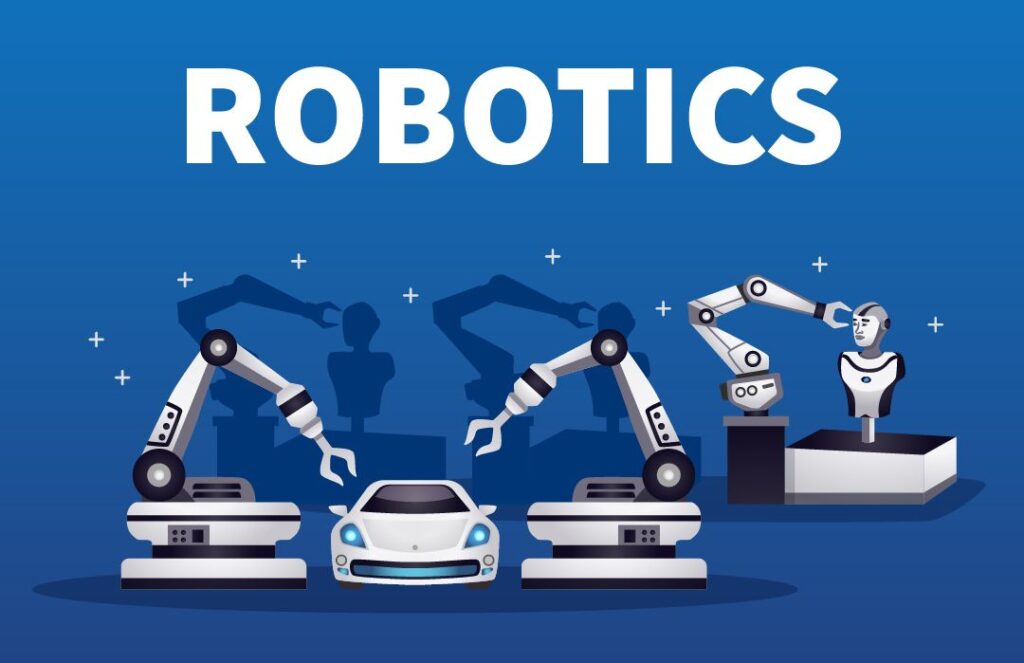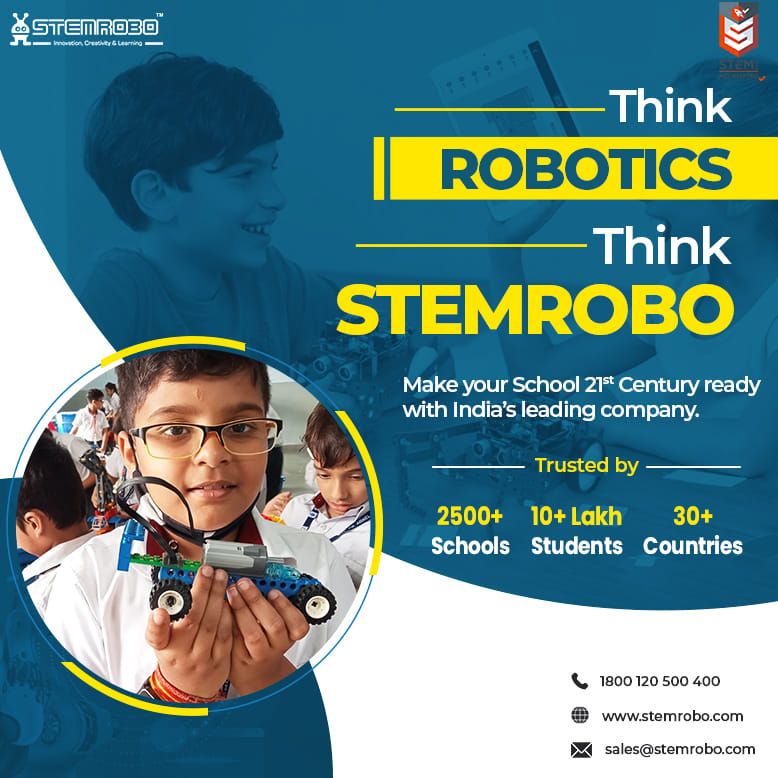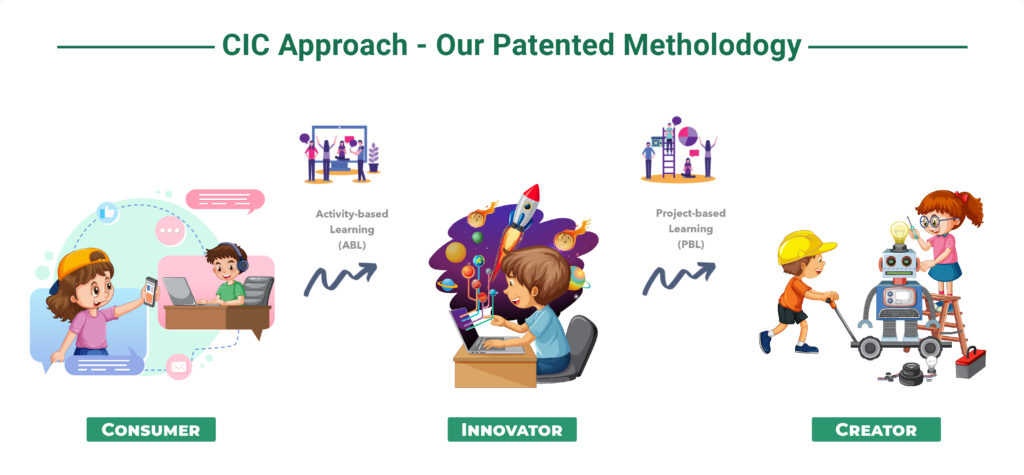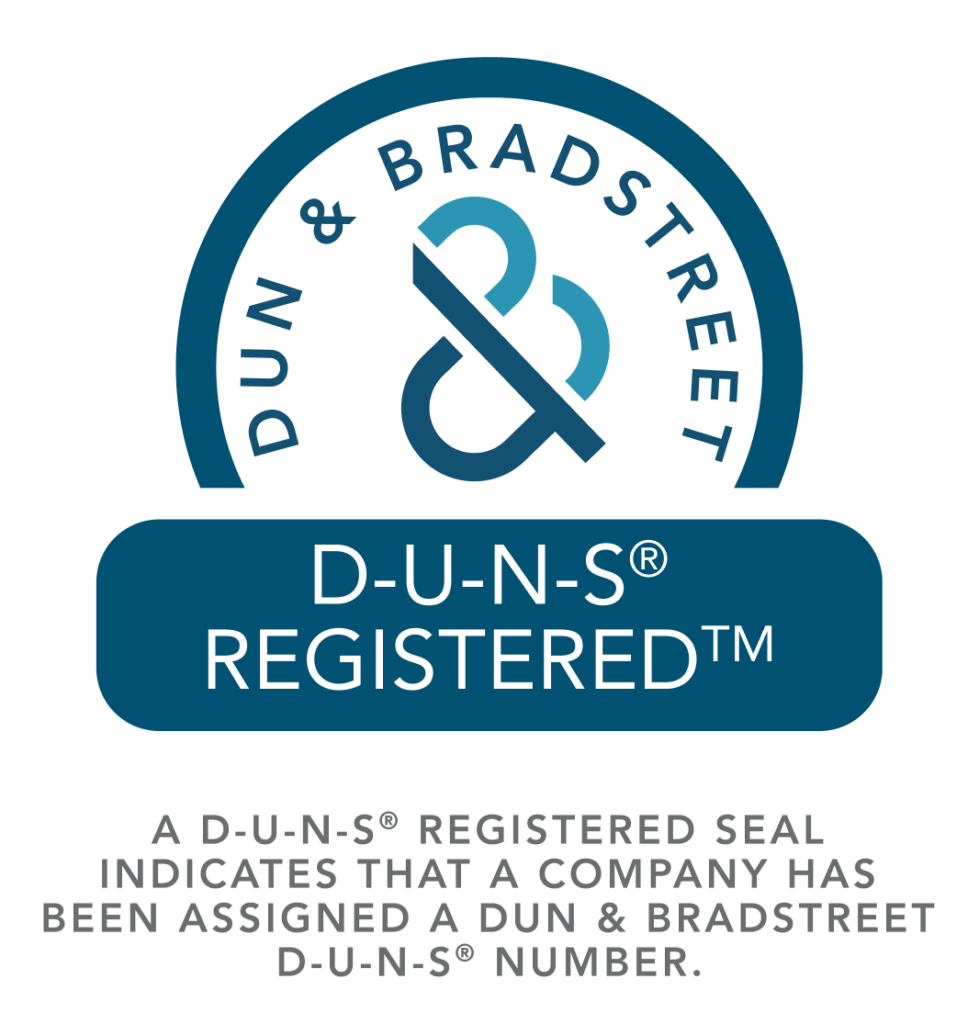Robotics lab setup in School
Introducing robotics labs in schools for small kids can provide a range of benefits that lay a strong foundation for their future education and careers. these labs offer early exposure to technology, allowing young children to interact with robots and learn basic programming concepts in a playful and engaging manner. This early exposure can spark an interest in STEM fields and help children develop a comfort with technology that will serve them well in the future. Because of its wide-ranging effects, the discipline of robotics is essential to today’s technological environment. First, automation across sectors is driven by robotics, which raises production and efficiency. In addition to being economical, this automation also lowers the possibility of human error—especially in dangerous or complicated settings. Second, by pushing the boundaries of technology, robotics fosters creativity and creates new discoveries and innovations. This breakthrough is seen in industries such as healthcare, where robotic surgery has transformed medical procedures. Furthermore, robotics is essential to problem-solving because it makes it possible to carry out operations like deep-sea studies and space flights that would be too risky or impossible for people. Additionally, robotics is a crucial component of STEM education since it gives kids a hands-on learning environment in which to build critical thinking and teamwork skills. Students must be introduced to robotics at an early age since the subject is growing and offers amazing job options. robotics plays a crucial role in the advancement of technology, improving productivity, and preparing the next generation for the problems that lie ahead. Integrating robotics curriculum and labs in K-12 schools is paramount in preparing students for the modern technological landscape. Robotics education offers numerous benefits, including fostering creativity, enhancing problem-solving skills, and providing hands-on learning experiences. Firstly, robotics encourages creativity by challenging students to design robots that solve real-world problems. This process requires them to think outside the box and come up with innovative solutions, which is a valuable skill in any field. Secondly, robotics enhances problem-solving skills as students learn to identify issues with their robots and troubleshoot them. This hands-on approach to problem-solving helps students develops a systematic approach to tackling challenges, a skill that is applicable in various aspects of life. Moreover, robotics provides hands-on learning experiences that make STEM subjects more engaging and accessible. Students can see the practical applications of concepts they learn in the classroom, which can deepen their understanding and appreciation for these subjects. Additionally, robotics fosters collaboration as students often work in teams to design and build their robots. This collaborative environment helps students learn to communicate effectively, share ideas, and work together towards a common goal. Furthermore, robotics lab set up in schools prepares students for future careers in STEM fields. As automation and robotics become more prevalent in various industries, students with robotics experience will be better equipped to pursue these careers. Integrating robotics curriculum and robotics lab setup in schools for K-12 students is essential for preparing them for the challenges and opportunities of the future. It fosters creativity, enhances problem-solving skills, provides hands-on learning experiences, fosters collaboration, and prepares students for future careers in STEM fields. Introducing robotics labs in schools for small kids can have tangible benefits that are both educational and enjoyable. For example, imagine a group of kindergarten students working together to build a simple robot using colourful, large building blocks. Through this activity, they learn basic concepts of engineering and physics as they discover how different configurations affect the robot’s movement. For slightly older students, a project involving building a robotic hand using everyday materials can be both instructive and entertaining. As they assemble the hand and explore how different materials and mechanisms affect its movement, they learn about anatomy, engineering, and robotics in a hands-on way. These examples illustrate how robotics labs can provide small kids with engaging, educational experiences that lay the groundwork for future learning in STEM fields. By making learning fun and interactive, robotics labs can inspire a love of learning and exploration that lasts a lifetime. STEMROBO offers a range of robotics kits and educational resources specifically designed for small kids. These kits are designed to be engaging and easy to use, making them ideal for introducing young children to robotics concepts. One-way STEMROBO can help is by providing schools with robotics kits that are suitable for small kids. These kits typically include building blocks, sensors, and motors that can be used to create simple robots. By using these kits, kids can learn basic robotics concepts such as movement, sensors, and programming in a hands-on and fun way. Additionally, STEMROBO can offer training and support for teachers to help them integrate robotics into their curriculum. This can include workshops, online resources, and ongoing support to ensure that teachers feel confident and capable of teaching robotics to small kids. STEMROBO can develop age-appropriate curriculum materials that align with educational standards and goals. These materials can include lesson plans, activities, and assessments that help teachers effectively teach robotics concepts to small kids. By providing schools with robotics kits, training for teachers, and curriculum materials, STEMROBO can help ensure that small kids have access to high-quality robotics education that prepares them for future success in STEM fields. By providing an innovative curriculum and hands-on learning opportunities, teacher training, Robotic lab setup in school, and community support, STEMROBO helps make robotics education accessible and enjoyable for small kids. This, in turn, prepares them for future success in STEM fields and fosters a lifelong love of learning and exploration.
Robotics lab setup in School Read More »

